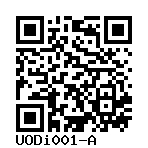ChiPS4, ChiPSC4
UODi001-A
General
Donor Information
General Donor Information |
|
| Sex | male |
| Age of donor (at collection) | neonate |
Phenotype and Disease related information (Donor) |
|
| Diseases | No disease was diagnosed.
|
| Disease associated phenotypes | no phenotypes |
Karyotyping (Donor) |
|
| Has the donor karyotype been analysed? |
Yes
|
Other Genotyping (Donor) |
|
| Is there genome-wide genotyping or functional data available? |
No
|
External Databases (Donor) |
|
| BioSamples | SAMEA2335023 |
Ethics
| Has informed consent been obtained from the donor of the embryo/tissue from which the pluripotent stem cells have been derived? | Yes |
| Was the consent voluntarily given? | Yes |
| Has the donor been informed that participation will not directly influence their personal treatment? | Yes |
| Can you provide us with a copy of the Donor Information Sheet provided to the donor? | No |
| Do you (Depositor/Provider) hold the original Donor Consent Form? | No |
| If you do not hold the Donor Consent Form, do you know who does? | Yes |
| Alternatives to consent are available? | Yes |
| Alternatives to consent | |
| Alternative consent approval number | |
| Please indicate whether the data associated with the donated material has been pseudonymised or anonymised. | anonymised |
| Does consent explicitly allow the derivation of pluripotent stem cells? | Yes |
| * Does consent expressly prevent the derivation of pluripotent stem cells? | No |
| Does consent prevent CELLS DERIVED FROM THE DONATED BIOSAMPLE from being made available to researchers anywhere in the world? | No |
| How may genetic information associated with the cell line be accessed? | No information |
| Will the donor expect to receive financial benefit, beyond reasonable expenses, in return for donating the biosample? | No |
| Has a favourable opinion been obtained from a research ethics committee, or other ethics review panel, in relation to the Research Protocol including the consent provisions? | No |
| Has a favourable opinion been obtained from a research ethics committee, or other ethics review panel, in relation to the PROPOSED PROJECT, involving use of donated embryo/tissue or derived cells? | No |
| For generation of the cell line, who was the supplier of any recombined DNA vectors or commercial kits used? |
hIPSC Derivation
General |
|
| Source cell line name |
CCD-1112Sk Other names
|
| Source cell type |
Dermal fibroblasts are the major cell type in dermis and are commonly accepted as terminally differentiated cells.
|
| Source cell origin |
A retractable double-layered fold of skin and mucous membrane that covers the glans penis and protects the urinary meatus when the penis is not erect.
Synonyms
|
| Source cell line lot number |
59681643
|
| Age of donor (at collection) | neonate |
| Collected in | 2011 |
| Source cell line vendor | ATCC |
| Passage number reprogrammed | 7 |
Reprogramming method |
|
| Vector type | Integrating |
| Vector | Virus (Lentivirus) |
| Genes | |
| Is the used vector excisable? |
No |
| Absence of reprogramming vector(s)? |
No |
| Reprogramming vectors silenced? |
Yes |
| Methods used |
RT-PCR
|
| Vector map | |
Vector free reprogramming |
|
Other |
|
| Selection criteria for clones | Clones were selected based on morphology and cell surface expression of a human pluripotent stem cell surface marker (hES cellect, Cellartis AB). |
| Derived under xeno-free conditions |
No |
| Derived under GMP? |
No |
| Available as clinical grade? |
No |
Culture Conditions
| Surface coating | Matrigel/Geltrex |
| Feeder cells |
No |
| Passage method |
Enzymatically
TrypLE
|
| O2 Concentration | 21 % |
| CO2 Concentration | 5 % |
| Medium |
mTeSR™ 1
|
| Has Rock inhibitor (Y27632) been used at passage previously with this cell line? | Yes |
| Has Rock inhibitor (Y27632) been used at cryo previously with this cell line? | Yes |
| Has Rock inhibitor (Y27632) been used at thaw previously with this cell line? | Yes |
Characterisation
Analysis of Undifferentiated Cells
| Marker | Expressed | Immunostaining | RT-PCR | Flow Cytometry | Enzymatic Assay | Expression Profiles |
| NANOG |
Yes |
|
|
|||
| POU5F1 (OCT-4) |
Yes |
|
|
|||
| SOX2 |
Yes |
|
|
|||
| SSEA-1 |
No |
|
|
|||
| SSEA-3 |
Yes |
|
|
|||
| SSEA-4 |
Yes |
|
|
|||
| TRA 1-60 |
Yes |
|
|
|||
| TRA 1-81 |
Yes |
|
|
Cells have been tested to be able to differentiate into cell types repressentative of the three embryonic germ layers in vitro from spin embryoid body cultures. Markers for ectoderm, mesoderm and endoderm were nestin, smooth muscle actin and hnf-3 beta respectively.
Differentiation Potency
Genotyping
Karyotyping (Cell Line) |
|
| Has the cell line karyotype been analysed? |
Yes
46, xy
|
Other Genotyping (Cell Line) |
|


Login to share your feedback, experiences or results with the research community.